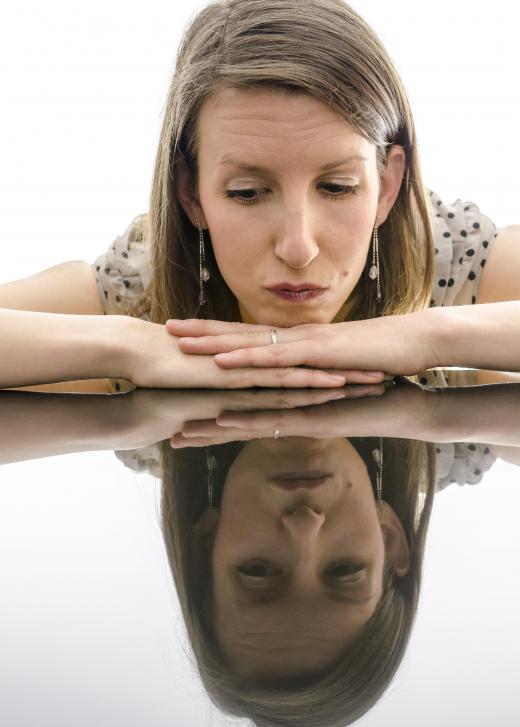What are Reflections?
Scientifically defined, reflections are the changes in the direction of waves, which occur as a wave strikes an object and then travels back through the medium it came from. When we speak of reflections, it most often refers to light waves or visual images. All types of waves can be reflected, including waves in water, as well as light and sound waves. The behavior of particular reflections depends on the type of energy being carried in the wave.
One example of this is the contrast between reflections of light and those of sound. An echo is a sound wave that is reflected, but it is not always easy to tell the origin of the sound wave. Light waves, though, follow a completely different and stricter set of rules. Light waves follow what is known as the law of reflection, which states that the angle at which light strikes a smooth reflective object is equal to the angle at which it is reflected.

The law of reflection does not mean that light always bounces back from where it came. Instead, if the light strikes at a steep angle, for example, it will be reflected at the same steep angle, but in the opposite direction. We can observe this from the angle at which the image of a cloud or a mountain is reflected in a calm lake, or in the way a mirror at the correct angle can allow us to see around a corner.

Even objects which are not smooth reflect light, although in a different way. These kinds of reflections are what constitute an object's color. For example, the red petals of a rose are red because they reflect the red wavelengths of visible light. Other wavelengths are absorbed, but the ones that are reflected scatter in all directions, and reach our eyes in this way. The same principle applies for any object we observe, namely that we see it only because it reflects light toward our eyes.

Some materials exhibit a property known as total internal reflection. This means that light waves traveling through such a medium are stopped from exiting it, and are reflected back into the medium at the same angle. Fiber optic cables have this property, allowing them to carry light waves in circles, around corners and over long distances. The light only exits when it reaches the end of the fiber. The surface of water can also cause the same phenomenon, when observed from underneath.
AS FEATURED ON:
AS FEATURED ON:













Discussion Comments
Thoughts that you write down can also be considered reflections. I think this is because when you read them years later, you get a solid mental image of what your state of mind was back when you wrote them.
Also, when you write reflections, you can sometimes reveal things to yourself that your mind may not have thought of before. Many times, I have discovered truths that have eluded me for years while writing.
Writing takes emotions and facts and reflects them back to you off of the page. Sometimes, when things are written down, they speak more loudly to you of unknown truths than just thinking about a situation ever could.
It amazes me that dogs can't seem to wrap their minds around reflections. Every dog that I have ever shown a mirror to has either freaked out and ran away or barked and looked behind it.
Even though I am standing right behind them and they can see and feel me touching their heads, it doesn't register that the doggie in the mirror is actually them. I have one dog that will bark at his reflection until I make him leave the room.
I guess they are just relying on the instinct to be alarmed at something that moves, yet can't be smelled. They try to pick up the scent by sniffing the mirror, but they are puzzled that they can't smell the reflection.
@kylee07drg – Reflections of landscapes in water are beautiful, as well. I have seen many photographs and paintings of mountains, trees, and animals flipped upside down and blurred a bit in a body of water.
I think it is truly beautiful to see an animal, like a deer, taking a drink from a lake while its reflection meets its nose. There's something so ethereal about seeing the world from the opposite angle while viewing it right-side-up, as well.
When something hits the surface of the still water, the reflection dissipates a bit. It's magical to watch it slowly return as the water calms down.
I can see beautiful internal reflections in my swimming pool in the late afternoon. Waves of rainbows dance across the bottom, wiggling but traveling nowhere.
When I am swimming or if the wind is blowing, these rainbows appear as intangible waves of color. I like to float across the surface on an inflatable raft and stare at the colors below.
Light does beautiful things when trapped in water. The only time I see the rainbows is late afternoon, so the angle of the sun must have to be just so in order to cause them to appear.
Can you elaborate about the laws of reflection?
Post your comments